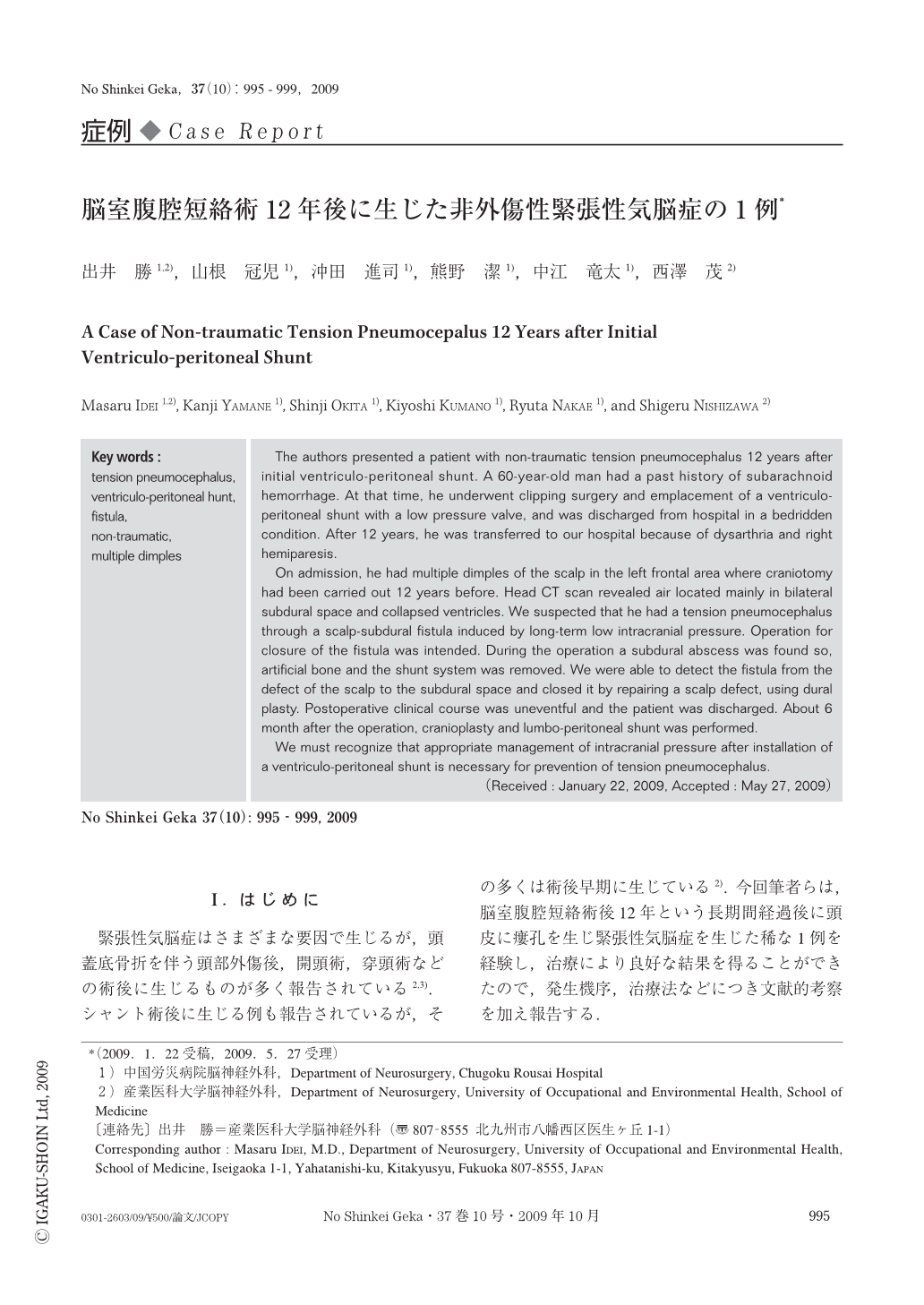Japanese
English
- 有料閲覧
- Abstract 文献概要
- 1ページ目 Look Inside
- 参考文献 Reference
Ⅰ.はじめに
緊張性気脳症はさまざまな要因で生じるが,頭蓋底骨折を伴う頭部外傷後,開頭術,穿頭術などの術後に生じるものが多く報告されている2,3).シャント術後に生じる例も報告されているが,その多くは術後早期に生じている2).今回筆者らは,脳室腹腔短絡術後12年という長期間経過後に頭皮に瘻孔を生じ緊張性気脳症を生じた稀な1例を経験し,治療により良好な結果を得ることができたので,発生機序,治療法などにつき文献的考察を加え報告する.
The authors presented a patient with non-traumatic tension pneumocephalus 12 years after initial ventriculo-peritoneal shunt. A 60-year-old man had a past history of subarachnoid hemorrhage. At that time, he underwent clipping surgery and emplacement of a ventriculo-peritoneal shunt with a low pressure valve, and was discharged from hospital in a bedridden condition. After 12 years, he was transferred to our hospital because of dysarthria and right hemiparesis.
On admission, he had multiple dimples of the scalp in the left frontal area where craniotomy had been carried out 12 years before. Head CT scan revealed air located mainly in bilateral subdural space and collapsed ventricles. We suspected that he had a tension pneumocephalus through a scalp-subdural fistula induced by long-term low intracranial pressure. Operation for closure of the fistula was intended. During the operation a subdural abscess was found so, artificial bone and the shunt system was removed. We were able to detect the fistula from the defect of the scalp to the subdural space and closed it by repairing a scalp defect, using dural plasty. Postoperative clinical course was uneventful and the patient was discharged. About 6 month after the operation, cranioplasty and lumbo-peritoneal shunt was performed.
We must recognize that appropriate management of intracranial pressure after installation of a ventriculo-peritoneal shunt is necessary for prevention of tension pneumocephalus.

Copyright © 2009, Igaku-Shoin Ltd. All rights reserved.


